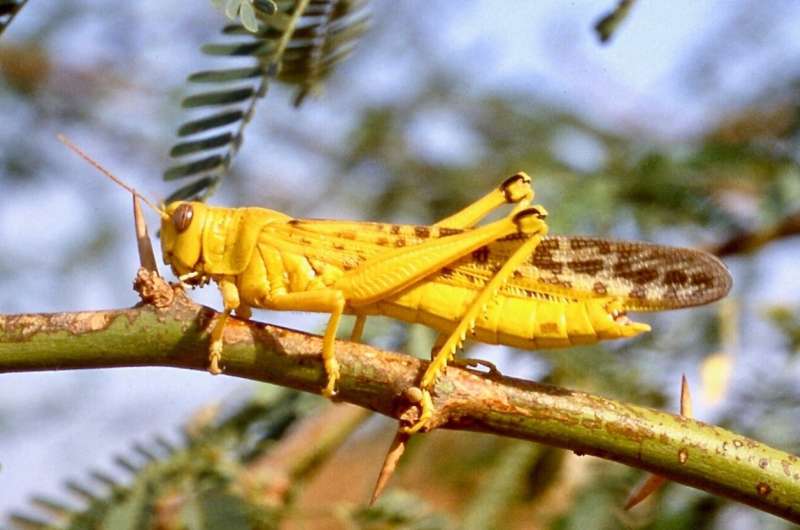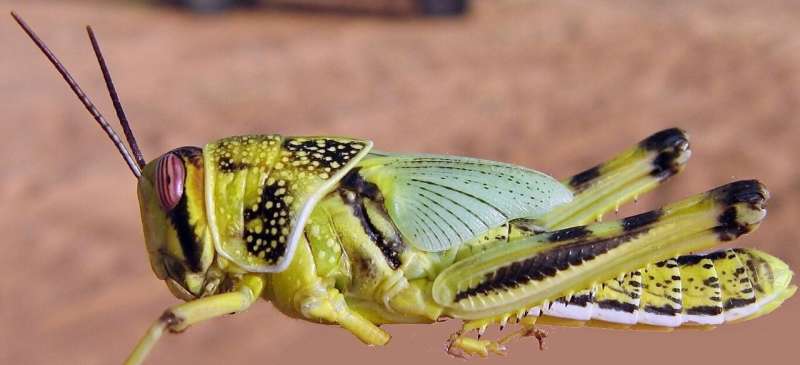Desert locusts remain a serious threat to Pakistan

In 2019 and 2020, desert locusts once again plagued parts of East Africa and huge areas as far as India and Pakistan through the Arabian Peninsula, in an infestation that was described as the worst in decades. A serious agricultural pest, the desert locust Schistocerca gregaria can feed on most types of crops, including grains, vegetables and fruit, causing significant damage to agricultural production and threatening food security in many countries.
Since the 1960s, a preventive control strategy against this pest has been implemented, based on monitoring of outbreak areas and ecological conditions, followed, if necessary, by early intervention and limited use of pesticides, so that any outbreak can be stopped as soon as possible. With 60 years of hindsight, desert locust invasions are now less frequent, smaller in scale and, if they cannot be stopped early, they are adequately managed.
However, financial and political uncertainties in many parts of the desert locust's range continue to sustain the threat, and not all invasions can be stopped early. This was the case in 2018, when such an upsurge was largely aided by rains in the southern Arabian Peninsula. Locusts could not be detected for several months and therefore went unchecked, mainly due to the insecure conditions, especially in Yemen. The swarms then progressively contaminated a large part of East Africa and spread to Iran, Pakistan and India. Pakistan, in particular, subject to periodic swarm invasions in the past, faced a particularly severe situation in 2019-2020, where the swarms could only be contained after several months of intensive control.
Scientists Riffat Sultana, Ahmed Ali Samejo and Samiallah Soomro (University of Sindh, Pakistan), Santosh Kumar (University of Cholistan, Pakistan) and Michel Lecoq (former director of a locust research unit at CIRAD, France) synthesized these two years of upsurge in a new research article published in the open-access Journal of Orthoptera Research. They focused on Pakistan, the damage caused in this country, and the surveillance and control operations undertaken, clarifying, at the same time, at both national and international level, the role of the different actors in the management of this pest, and suggesting some improvements for the future.

During this upsurge, a great deal of damage was caused to all types of crops. The Government of Pakistan's preliminary estimate of monetary losses due to desert locusts for the agricultural seasons 2020 and 2021 ranges from $3.4 billion to $10.21 billion. More than 3 million people were facing severe acute food insecurity.
The authors also note that Pakistan needs to continue to be prepared and improve the prevention system already in place. They suggest developing compensatory measures for local populations in the event of an uncontrolled invasion at an early stage, increasing the use of alternatives to chemical pesticides such as mycopesticides, and maintaining funding mechanisms that provide sustainable support even in times of recession. Perhaps the most important challenge is certainly to maintain long-term efforts to build resilience, despite the apparent absence of imminent threats.
More information: Riffat Sultana et al, The 2019–2020 upsurge of the desert locust and its impact in Pakistan, Journal of Orthoptera Research (2021). DOI: 10.3897/jor.30.65971
Provided by Pensoft Publishers




















